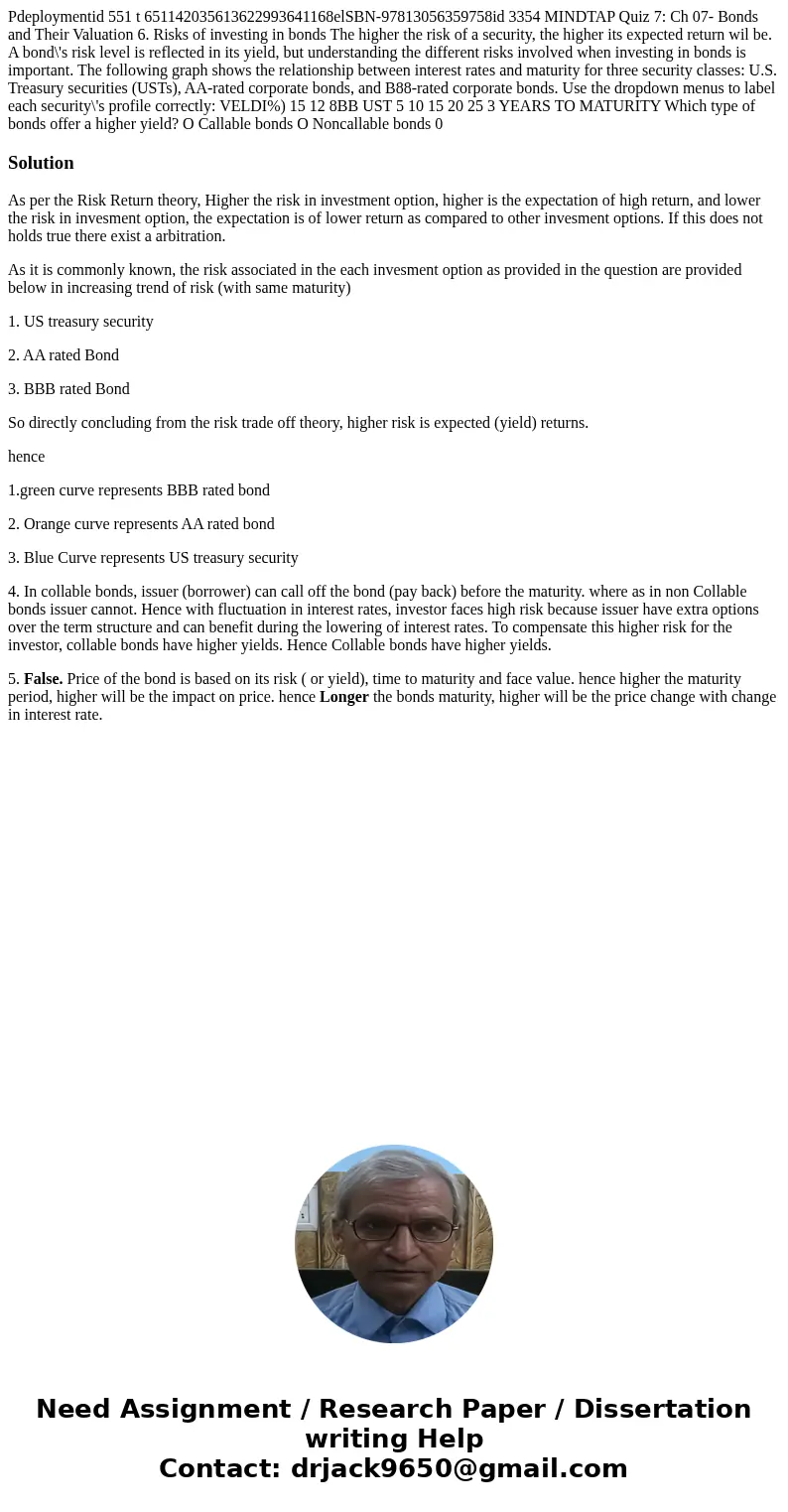Pdeploymentid 551 t 651142035613622993641168elSBN97813056359
Solution
As per the Risk Return theory, Higher the risk in investment option, higher is the expectation of high return, and lower the risk in invesment option, the expectation is of lower return as compared to other invesment options. If this does not holds true there exist a arbitration.
As it is commonly known, the risk associated in the each invesment option as provided in the question are provided below in increasing trend of risk (with same maturity)
1. US treasury security
2. AA rated Bond
3. BBB rated Bond
So directly concluding from the risk trade off theory, higher risk is expected (yield) returns.
hence
1.green curve represents BBB rated bond
2. Orange curve represents AA rated bond
3. Blue Curve represents US treasury security
4. In collable bonds, issuer (borrower) can call off the bond (pay back) before the maturity. where as in non Collable bonds issuer cannot. Hence with fluctuation in interest rates, investor faces high risk because issuer have extra options over the term structure and can benefit during the lowering of interest rates. To compensate this higher risk for the investor, collable bonds have higher yields. Hence Collable bonds have higher yields.
5. False. Price of the bond is based on its risk ( or yield), time to maturity and face value. hence higher the maturity period, higher will be the impact on price. hence Longer the bonds maturity, higher will be the price change with change in interest rate.

 Homework Sourse
Homework Sourse